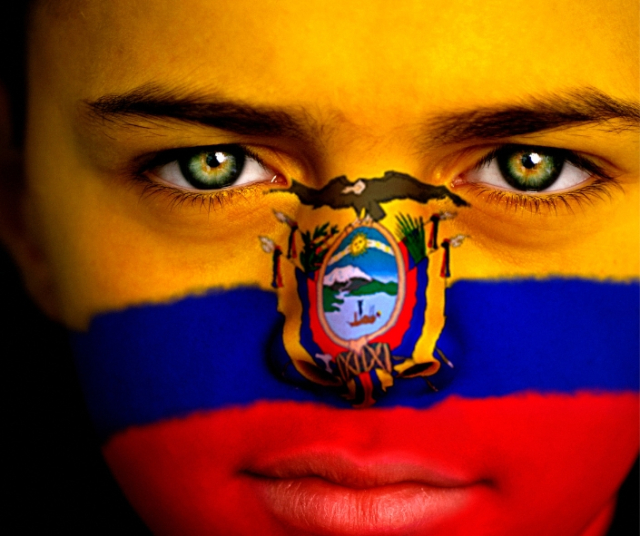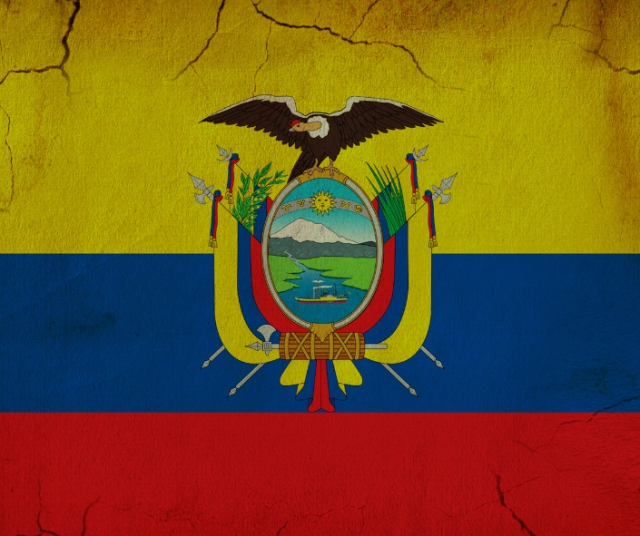October 31 is a significant date in Ecuador, marked by the celebration of National Shield Day. This emblem, loaded with symbolism and history, represents the identity and sovereignty of the South American country. Over the years, the shield has evolved, reflecting the political, social and cultural transformations of Ecuador. In this article, we will explore the rich history of National Shield Day, its meaning and the importance it has for the Ecuadorian nation.
Origins of the National Shield: A Link with Independence.
The National Coat of Arms of Ecuador has its roots in the turbulent years of South American independence from Spanish rule in the 19th century. It was officially adopted on October 31, 1833, becoming a visual symbol of the freedom and self-determination achieved by the Ecuadorian people. Designed by Juan José Flores and Juan León Mera, the shield encapsulates the essence of the newborn nation.
Elements of the National Shield: A Profound Symbolism.
The shield's design is a masterpiece of symbolism, with each element carefully selected to represent key aspects of Ecuadorian identity. In the center of the shield is the majestic Andean condor, symbol of freedom and greatness. Its outstretched wings evoke the idea of expansion and autonomy that Ecuadorians sought during the fight for independence.
At the top of the shield, a radiant sun emerges over a mountainous horizon. This sun represents the light of freedom and hope that shines on Ecuador. The mountains, for their part, symbolize the unique geography of the country, marked by the Andes mountain range.
At the base of the shield, a meandering river runs through the Ecuadorian land. This river, which represents the Guayas, is a tribute to the country's water wealth and its importance in the daily lives of Ecuadorians. Furthermore, the laurel and olive branches that surround the shield symbolize glory and peace, respectively, two fundamental pillars in building a strong and prosperous nation.
The Evolution of the Shield: Reflection of National History.
Over the years, the National Shield has undergone modifications that reflect changes in Ecuador's history. Each adjustment in the design has sought to accurately capture the values and aspirations of the Ecuadorian people at different times in history.
During periods of political instability, the shield has been modified to reflect the predominant ideology. However, despite these transformations, certain fundamental elements, such as the condor, the radiant sun and the mountains, have endured, reminding Ecuadorians of the continuity of their national identity over time.
Celebration of National Shield Day: An Act of Patriotism.

Every October 31, Ecuador dresses up to commemorate National Shield Day. Schools, government institutions and society in general participate in events that pay tribute to the national emblem. Parades, civic ceremonies and cultural activities are held throughout the country to highlight the importance of the shield as a symbol of unity and national pride.
Schools play a crucial role in the celebration, organizing special events where students learn about the history and meaning of the shield. Many times, the active participation of students is encouraged through essay contests, artistic projects, and theatrical performances that explore the symbology of the shield and its connection to the country's history.
In government institutions, official ceremonies are held in which flags are raised and national anthems are sung. Speeches by political leaders and prominent figures highlight the importance of the shield as a constant reminder of the fight for independence and the values that the Ecuadorian nation embraces.
Cultural events are also an integral part of the celebration. Art exhibitions, concerts, and folkloric activities highlight Ecuador's cultural richness and diversity. Citizens come together to celebrate their common identity, strengthening the ties that unite the nation.
The National Coat of Arms today:
As Ecuador moves forward into the 21st century, the National Shield is not only a national symbol, but also a constant reminder of the country's contemporary challenges and goals. Ecuadorian society, in constant evolution, faces issues related to sustainable development, social inclusion and environmental preservation.
The condor on the shield, which represents freedom, takes on a new dimension in the modern era. Freedom refers not only to the political independence achieved in the 19th century, but also to the continued pursuit of individual freedoms, human rights, and social justice today. In a globalized world, the National Shield serves as a beacon that guides Ecuador towards a future where equality and diversity are as important as independence.
The sun shining over the mountains symbolizes the light of hope and progress. In the contemporary context, this light can be interpreted as the drive towards economic development, technological innovation and quality education. Ecuador, like many nations, strives to build a prosperous future for its citizens, and the National Shield acts as a visual reminder of these ideals.
The Guayas River, represented on the shield, takes on special relevance in the modern era. At a time when sustainable management of natural resources is crucial, the river symbolizes the need to preserve the environment and ensure access to clean water for future generations. Environmental responsibility thus becomes an essential component of Ecuadorian identity.
The presence of laurel and olive branches highlights the importance of glory and peace in nation-building. As Ecuador seeks to consolidate its position in the international community, these aspirations are reflected in its diplomatic efforts, its participation in international organizations and its commitment to the peaceful resolution of conflicts.
Future Challenges and Opportunities: The Role of the National Shield
Despite the achievements and advances, Ecuador faces significant challenges in the 21st century. Issues such as economic inequality, corruption, and equitable access to education and healthcare remain areas of concern. The National Shield, as a unifying symbol, urges Ecuadorians to address these challenges with determination and solidarity.
Technology has also brought with it new challenges, but also opportunities to strengthen national identity. Social networks and digital platforms allow Ecuadorians to share their culture, history and achievements with the world. The National Shield, in this context, becomes a powerful tool to build a collective narrative and promote a positive image of Ecuador at a global level.
The National Shield as a Witness to History and Guide to the Future
National Shield Day in Ecuador is not only a celebration of a national symbol, but also an opportunity to reflect on the past, understand the present and look to the future. The National Shield has witnessed the country's history and has evolved to reflect its fundamental values.
As Ecuador moves forward into the 21st century, the National Shield continues to play a crucial role in reminding citizens of their heritage, their aspirations and their responsibility to future generations. Beyond its symbolic function, the shield is a call to action, inspiring Ecuadorian society to work together to build a stronger, fairer and more sustainable country. In each celebration of National Shield Day, Ecuadorians renew their commitment to these ideals, remembering that the path to greatness and freedom is a continuous enterprise.
